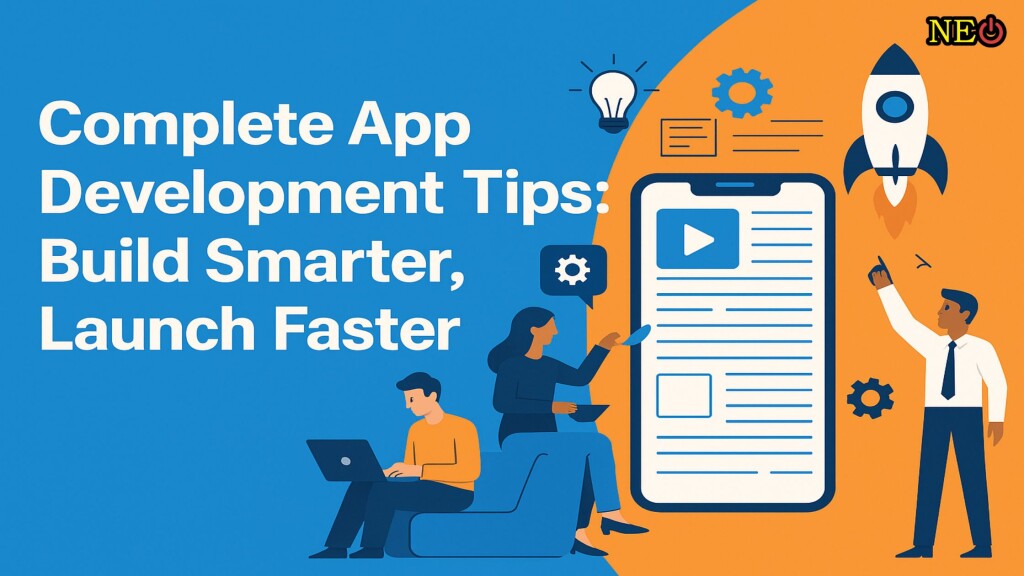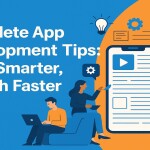In today’s fast-paced digital world, building an app is no longer just about writing code—it’s about creating value, offering seamless user experiences, and getting to market quickly without compromising quality. Whether you're a startup founder, a freelance developer, or part of a product team, mastering efficient app development can give you a significant edge. Here’s your complete guide to building smarter and launching faster.
1. Start with a Solid Plan
Before a single line of code is written, lay the groundwork.
Define Your Purpose: What problem does your app solve? Who are your users?
Do Market Research: Study competitors, trends, and user behavior.
Sketch the User Journey: Map out how users will interact with your app.
Pro Tip: Use tools like Figma or Adobe XD for wireframes and prototyping. This helps avoid major design rework later.
2. Choose the Right Tech Stack
Your technology stack affects scalability, development speed, and maintenance.
For Native Apps: Use Swift for iOS, Kotlin for Android.
For Cross-Platform: Consider Flutter or React Native.
For Backend: Node.js, Django, Firebase, or serverless architecture can speed up deployment.
Pro Tip: Opt for cross-platform development when budget and time are tight but functionality must remain high.
3. Adopt Agile Development
Agile methodologies like Scrum or Kanban keep your project flexible and responsive to change.
Break work into sprints
Prioritize tasks with a backlog
Review and iterate regularly
Pro Tip: Use tools like Jira, Trello, or ClickUp to track tasks and collaborate effectively.
4. Focus on MVP First
Your Minimum Viable Product (MVP) is the leanest version of your app that still solves a core problem.
Avoid feature overload
Gather user feedback early
Iterate based on real data
Pro Tip: Validate your idea by launching a landing page or mock version to test interest before full development.
5. Optimize UI/UX Design
An intuitive, visually appealing design is essential.
Use familiar design patterns
Ensure accessibility (color contrast, font sizes, screen readers)
Keep the interface clean and minimal
Pro Tip: Conduct usability testing with real users to uncover pain points.
6. Automate Testing & QA
Bugs kill user experience and credibility. Regular testing is non-negotiable.
Use unit tests, integration tests, and end-to-end tests
Automate regression testing
Continuously integrate code using tools like GitHub Actions, CircleCI, or Bitrise
Pro Tip: Set up test environments for staging before pushing to production.
7. Optimize Performance Early
Slow apps get deleted. Period.
Compress images and assets
Lazy load content
Monitor performance using tools like Firebase Performance or New Relic
Pro Tip: Aim for under 3-second load times for core screens.
8. Prioritize Security
Users trust your app with their data. Don't betray that trust.
Use HTTPS everywhere
Encrypt sensitive data
Regularly update libraries and dependencies
Follow OWASP guidelines
Pro Tip: Consider using third-party authentication providers like Google, Facebook, or Apple for secure sign-ins.
9. Prepare for Launch Like a Pro
Your app’s launch can make or break it.
App Store Optimization (ASO): Optimize title, description, keywords, and screenshots.
Marketing Plan: Leverage email, social media, and press outreach.
Beta Testing: Use TestFlight (iOS) or Google Play Beta (Android) to gather feedback before full launch.
Pro Tip: Soft launch in a smaller market to test and improve before going global.
10. Post-Launch: Iterate and Scale
Your job isn’t done after launch—it’s just beginning.
Monitor analytics (user retention, engagement, crash reports)
Gather user feedback
Roll out updates regularly
Pro Tip: Use customer support tools like Zendesk or Intercom to manage user concerns effectively.
Final Thoughts
App development doesn't have to be overwhelming. By following these complete development tips, you can build smarter with strategic planning, develop faster using the right tools, and launch confidently knowing your product is ready to succeed.
Every great app starts with a clear vision—but it thrives with consistent execution and user focus.









